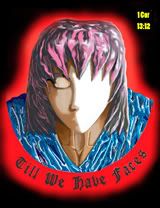Partisan Review
Mass murder inspired by Islamic fundamentalism and fanaticism differs from the secular totalitarian ideologies and regimes of Europe’s twentieth century: fascism and Nazism, on the one hand, and Communism, especially in the Stalin era, on the other.
Like the twentieth-century totalitarians, today’s Islamic fundamentalist fanatics are convinced that they possess absolute Truth which is immune to refutation or criticism; they despise Western modernity yet borrow its technological accomplishments in an effort to destroy it.
They believe that force and terror are necessary to establish a utopia in place of the current decadent and corrupt world; and they explain history on the basis of a conspiratorial construct in which the United States, more than "international Jewry" or global capitalism, plays the central role.
Unlike the followers of the past century’s secular religions, today’s terrorists draw inspiration from an apocalyptic vision rooted in religious radicalism. Osama bin Laden and al Qaeda emerge in a global political culture in which elements of Leftist anti-globalization discourse and reruns of fascist and Nazi visions of Jewish conspiracies merge with religious passions.
Because al Qaeda knows how to speak the language of leftist anti-imperialism of the past century, it suggests a mood that overlaps with secular Third-World radicalism. Yet in crucial matters, such as its view of death and suicide and its stance on rationality, it appears closer to the fascist and Nazi philosophy than to the Communist past.
The stand-off with Soviet Communism could end with its peaceful implosion; as was the case with fascism and Nazism, the only way the threat of terrorism inspired by radical Islam can end is through its military defeat....






0 Comments:
Post a Comment
<< Home